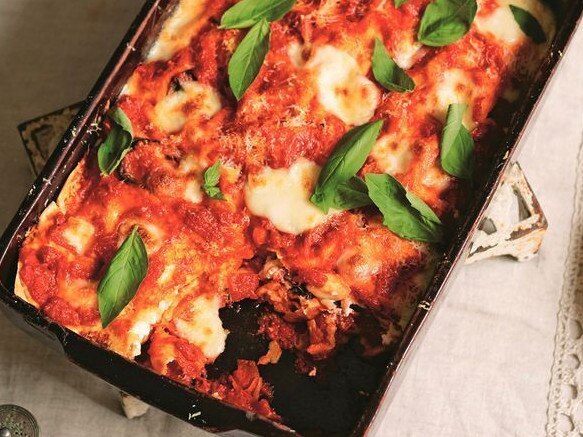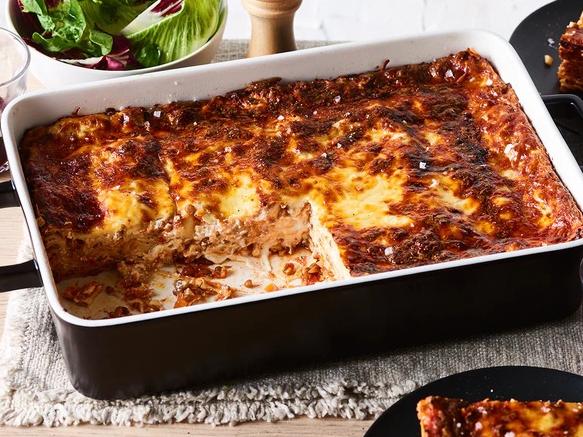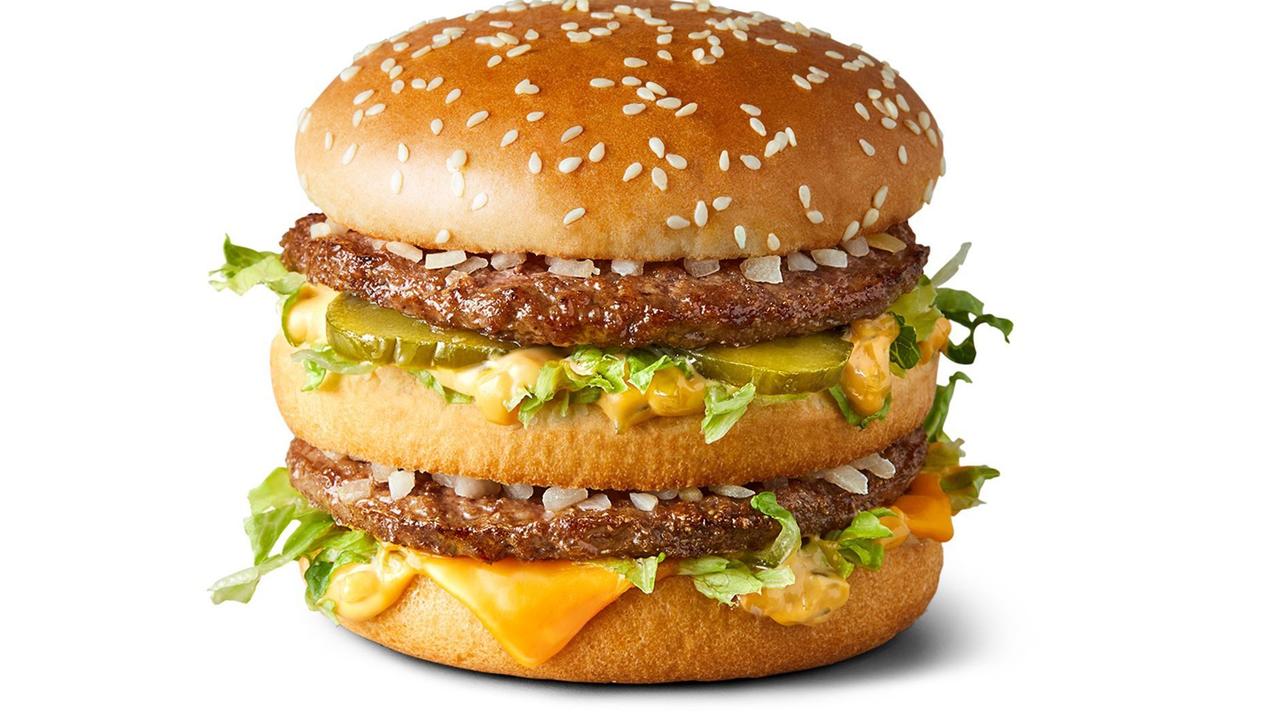Lessons in Chemistry perfect lasagna recipe
Thought your lasagne was good? Wait until you try the “perfect” lasagne from Lessons in Chemistry. See the full recipe here.
Get out the sodium chloride and monosaccharides.
Anyone who has made lasagne from scratch can attest, this is a dish that requires time, patience and a lot of effort.
The seemingly simple alchemy of pasta, bolognese, and bechamel often seems like something you can ‘whip up’ for dinner.
Cut to an hour later where every pot and pan you own has been thrown into the sink, scraps of celery, onion, and carrots everywhere.
Chaotic at the best of times, the one thing about lasagne that cannot be denied is that its preparation requires love.
Which is precisely what watchers of Lessons in Chemistry on Apple TV have been finding as they attempt to recreate her 12-layer lasagne, perfected through a deep dive into the science of cooking.

Related story: Hearty Italian recipes that are not all lasagne
The opening scene, our hero Elizabeth Zott refers to sodium chloride she requested for her recipe as she makes her way to a sound stage. If you’re not a food scientist, you might be left scratching your head. Salt. She’s ordered salt.
Zott’s language throughout the series is a constant; she refers to monosaccharides rather than sugar.
Sodium citrate is a test ingredient in her bechamel to fuse cheese proteins together. A quick google reveals she is adding citric acid to alkalise and stop her sauce from splitting.
For Zott’s reluctant entrant into a talent quest, she explains that she would have placed a tomato into a bowl of boiling water, as heat causes molecules to get excited. She would then place the tomato into cold water so the skin slides right off. Blanching. We know she has been blanching tomatoes because she loves lasagne.

It’s a lot, and watching the series is a real, well, lesson in chemistry.
Elizabeth Zott’s recipe for lasagne is not revolutionary.
It is considered, she understands maillard reaction, the interactions of acid and sugar, how fat content interacts with taste buds and then of course with our brains. Zott’s lasagne is by all accounts delicious, of course it is. The addition of chilli flakes and ricotta don’t make it into every grandmother’s recipe book, sure.
But it is with Zott and colleague Calvin Evans’ creating the lasagne that we the audience see that the secret ingredient is love.
“Caring for loved ones takes work, real work. Anyone who tells you differently does not cook dinner for a family of five every night.” Zott is spot on.
If you do want to have a crack at Elizabeth Zott’s perfect lasagne, check out the official recipe below.

Bolognese:
3 tablespoons extra virgin olive oil (45ml)
2 tablespoons unsalted butter (30g)
1 carrot, finely chopped
1 celery rib, finely chopped
1 medium onion, finely chopped
Kosher salt
3 cloves garlic, minced
1 teaspoon red chili flakes
170g can tomato paste
500g lean beef mince
500g pork mince
110g pancetta, ground or very finely chopped
1 cup whole milk
1 cup dry white wine
1 tablespoon chopped fresh oregano (3g)
Bechamel:
5 tablespoons unsalted butter (70g)
¼ cup all-purpose flour
3 cups full fat milk, warmed
1 teaspoon kosher salt (4g)
½ teaspoon freshly grated nutmeg (1g)
425g container ricotta cheese
Olive oil, for brushing
500g dried lasagna noodles
2 cups finely grated parmesan (200g)
1 ½ cups grated mozzarella cheese (150g)
2 tablespoons chopped Italian parsley
Method
1. Heat the olive oil and butter in a large pot over medium-high heat. Add the carrot, celery, and onion. Saute, stirring occasionally, until translucent, about 5 minutes.
2. Season with salt, add the garlic and chili flakes, and cook for an additional minute.
3. Add the tomato paste and cook, stirring constantly, until the tomato paste coats the bottom of the pan and turns a deep, brick red color, about 3 minutes.
4. Add the minced beef, minced pork, and pancetta. Cook until no longer pink, about 10 minutes. As it cooks, season with salt and use a wooden spoon or spatula to smash the meat and break it into small bits.
5. Stir in the milk and wine, and bring to a simmer. Add the oregano, cover, and reduce to the lowest temperature. Simmer for 1½ hours, stirring occasionally.
6. For the ricotta béchamel, melt the butter in a medium pot over medium-low heat.
7. Add the flour and cook for 1 minute, stirring constantly with a wooden spoon or spatula. In a steady stream, whisk in the milk. Bring to a simmer and cook on medium-low for 1 minute to thicken. Stir in the salt and nutmeg and remove from heat.
8. Let cool for 15 minutes, then stir in the ricotta cheese. Season with more salt, if desired.
9. Heat the oven to 190 and brush a 9×13 inch pan with olive oil.
10. Boil the lasagna sheets in a large pot of heavily salted water to just under al dente. Drain and slick them with a little bit of olive oil to prevent sticking.
11. Spread ¾ cup of the ricotta béchamel on the bottom of the pan and top with a layer of pasta. Spread another ¾ cup of béchamel on top of the pasta, then spread ¼ of the bolognese on top (about 1¼ cups). Top with a liberal dusting of parmesan cheese (about ⅓ cup). Top with another layer of pasta and repeat this layering process 4 more times, giving you 5 layers of pasta.
12. Top the final layer with the remaining béchamel, the remaining parmesan, and all of the mozzarella cheese.
13. Bake uncovered for 35-40 minutes, until the sauce bubbles up on the sides and the top is browned.
14. Let cool 15 minutes, sprinkle the chopped parsley on top, slice, and serve.
Related story: Lift your lasagne game with these 6 recipes
For more food, travel and lifestyle news, go to delicious.com.au
Originally published as Lessons in Chemistry perfect lasagna recipe


